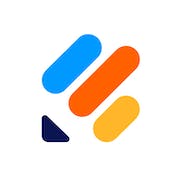Looking for the best employee recognition software? Our comprehensive buyer's guide has all the information you need to make an informed decision. Compare top options, features, and pricing to find the perfect fit for your company. Click now to learn more!
In today's competitive market, employee recognition and employee engagement are not just buzzwords, but key to retaining top talent and boosting company productivity. 83.6% of employees feel that recognition affects their motivation to succeed at work, making it a crucial component to business success.
Employee recognition software is a vital tool in achieving this goal, providing a streamlined way to recognize and reward employees for their hard work and dedication. But with so many options available, choosing the right software for your organization can be overwhelming. That's why we've created this employee recognition software buyer's guide to help you navigate the options, understand the features, benefits, and implementation process, and ultimately select the software that best aligns with your organization's unique needs and goals.
Whether you're a small business or a multinational corporation, this guide will provide you with the information you need to make an informed decision and take your organization's employee recognition initiatives to the next level.
What is employee recognition software?
Employee recognition software is a powerful tool in helping companies to promote employee appreciation and meaningful recognition within the workplace. It automates the process of recognizing top-performing employees, making it easier for companies to track and reward outstanding work.
It's especially beneficial for companies with large workforces that find it challenging to give personalized recognition to each employee. By leveraging an employee recognition platform, managers and supervisors can quickly and easily recognize employee achievements, making it an asset for boosting employee engagement, motivation and job satisfaction.
Below are some of the most common use cases of employee recognition platforms:
- Companies can use recognition software to offer employee rewards like monetary bonuses, paid time off, or gift cards to top-performing employees.
- It can enable employees to recognize their peers for outstanding work, boosting employee camaraderie and motivation.
- Companies can better track employee performance over time, helping to identify top-performing employees and areas where improvement is needed.
- Some employee recognition solutions can include features like gamification, quizzes and surveys that help reinforce employee training, making it easier to onboard new employees while improving retention rates.
The types of companies that can benefit from this type of software are those that value meaningful recognition and want to create a positive company culture. These include companies with a large workforce, those that emphasize employee development and retention, and those in highly competitive industries.
Employee recognition platforms are a powerful tool for companies looking to improve employee engagement, productivity, and job satisfaction. It offers a range of benefits to both employers and employees, making it a valuable investment for any company looking to build a positive company culture and retain top talent.
The benefits of employee recognition software
In today’s fast-paced business environment, keeping employees productive and motivated is vital for success. One effective way to achieve this is by utilizing employee recognition software. This innovative technology allows businesses to create a culture of appreciation by recognizing the hard work and accomplishments of their employees.
The benefits of an employee recognition program are numerous, and businesses that choose to implement it can expect to see improvements in various areas, including:
Increased employee motivation
When employees feel appreciated for their work, they're more likely to stay engaged and motivated. An employee rewards program provides a place for businesses to publicly recognize the achievements and contributions of their employees, creating a sense of pride and satisfaction in their work.
Improved employee retention rates
By keeping employees motivated and engaged, businesses can reduce employee turnover rates and retain their top performers. Employee recognition software provides a way to acknowledge and reward employees for their hard work, leading to increased job satisfaction and loyalty.
Better performance
When employees feel valued, they're more likely to perform at their best. Employee recognition platforms provide a way to track employee performance and provide timely feedback and recognition, leading to improved productivity and better overall business performance.
Enhanced company culture
By creating a culture of appreciation and recognition, businesses can foster a positive work environment and increase employee morale. Employee recognition software provides a platform for celebrating successes and promoting positive behaviors, leading to a more engaged and satisfied workforce.
Improved customer satisfaction
Happy and engaged employees are more likely to provide excellent customer service, leading to increased customer satisfaction and loyalty. By creating a culture of positivity and excellence, businesses will find they provide better overall customer experiences.
Employee recognition software is an essential tool for businesses seeking to create a positive and productive work environment. By increasing employee morale, improving retention rates, and enhancing performance, businesses that choose to utilize this type of software can expect to see improvements across multiple areas of their organization.
10 key features of employee recognition software
Employee recognition is a valuable tool that many organizations utilize to boost employee engagement, motivation, productivity and retention. Whether you're a small business or a large corporation, employee recognition software can help you stay on top of employee performance, identify top performers and track the success of your recognition program. Here are ten common features you'll want to look out for:
-
Customizable recognition programs
Employee recognition software allows HR managers to create and customize recognition programs that align with their organization’s goals and objectives. This feature enables organizations to celebrate employee excellence while maintaining their unique culture.
-
Social recognition
Many employee recognition platforms offer social recognition, which allows employees to give and receive recognition badges, awards or points publicly. This feature fosters a positive work environment and promotes teamwork, collaboration and healthy competition.
-
Real-time feedback
Employee recognition software enables HR managers to provide timely and constructive feedback to employees. This key feature helps employees stay on track and adjust their behavior or performance as needed
-
Analytics and reporting
Providing HR managers with a variety of reports and analytics will help them track and evaluate the success of their recognition programs. This data can help identify areas for improvement and measure the ROI of recognition efforts.
-
Performance tracking
It's important to track employee performance metrics such as attendance, punctuality, and meeting project deadlines. This key feature helps HR managers identify top performers and develop appropriate reward and recognition strategies.
-
Mobile accessibility
Many employee rewards platforms provide mobile accessibility and their own mobile app, enabling employees to access the platform and send recognition from their phones or tablets, even when they're not in the office.
-
Integrations
Whichever employee recognition solution you choose, it needs to be able to integrate with other HR tools such as performance management software, payroll systems, and talent management platforms. This integration streamlines HR processes and ensures data accuracy across systems.
-
Multi-language support
Many employee recognition software platforms support multiple languages, making it easy to use for employees with different language backgrounds.
-
Employee survey tools
These types of platforms can include survey tools to help HR managers gather feedback from employees and monitor employee engagement. This feature helps organizations to continually improve their recognition programs and maintain a positive company culture.
-
Budget tracking
Employee recognition software can also help HR managers to set and manage recognition program budgets. This feature helps organizations control costs and allocate funds effectively to maximize the impact of their recognition efforts.
As you can see, employee recognition software offers many features that can help organizations build a positive workplace culture and retain top talent. By utilizing these key features, HR managers can stay on top of employee performance and engagement while creating a more productive and engaged workforce.
Key considerations when purchasing employee recognition software
In today's competitive business landscape, employee recognition is more than just a nice-to-have. It's an essential tool for ensuring employee engagement, motivation, and retention.
Investing in employee recognition software is the first step towards building a thriving workplace culture where employees feel appreciated and valued. However, choosing the right solution can be overwhelming given the vast array of options in the market. Here are some essential factors to consider when purchasing employee recognition software:
-
Customizability and flexibility
Every business is unique and has various employee recognition needs. Therefore, you need a platform that allows you to customize your recognition programs and awards. This will ensure they align with your company values, culture, and goals. Additionally, consider software with features that allow you to modify recognition programs as your business's needs change.
-
User experience
Employee recognition software should be easy to use, intuitive, and have a visually appealing user interface. The software should provide an excellent user experience and encourage participation from both employees and managers. In addition, ensure it provides a personalized employee experience that resonates with your staff.
-
Integrations
If your company uses multiple HR software and tools, ensure that your employee recognition platform can integrate with them. Integrations will streamline your HR processes and ensure that recognition data is synced with other HR software, making it easy to analyze employee recognition data.
-
Data analytics and reporting
Employee recognition data is essential in measuring the impact of your recognition program as well as identifying areas for improvement. Choose a solution with robust reporting capabilities that provide insights into employee participation, engagement, and satisfaction.
-
Security and compliance
Employee data is highly sensitive, and data breaches can have severe repercussions, therefore you will need a platform that complies with industry security and privacy standards like GDPR, CCPA and SOC-2, protecting employee data from unauthorized access or misuse.
Choosing the right employee recognition software is an important investment in your business's success. Consider customizability, integrations, and data analytics when selecting your platform. By using these factors as a guide, you'll be able to choose software that meets your business's unique employee recognition needs and enhances your workplace culture.
Software trends for employee recognition software
Employee recognition has been a game-changer in workforce management, and with the advancement of technology, the use of employee recognition software has become increasingly popular. As we move through 2024, here are the biggest trends we can expect to see in the coming years:
- Artificial intelligence integration: AI-powered recognition software can analyze employee performance data and generate insights, which can help organizations design better programs.
- Multi-channel recognition: Gone are the days of relying solely on emails or static platforms. Companies are now exploring multiple channels such as mobile apps, social media integrations, and virtual platforms, enabling a modern, connected, and dynamic workforce.
- Unique recognition programs: One size does not fit all. Employees want personalized recognition that aligns with their unique talents and career paths. Recognition software can help organizations build tailored programs to enable better employee engagement and retention.
- Real-time feedback: Traditional annual/bi-annual feedback mechanisms are being replaced by continuous feedback that captures employees' everyday wins and accomplishments. Recognition tools with real-time feedback functionalities can provide instant kudos and motivation while providing managers with insights to support employee development.
The use of employee recognition software is on the rise, and organizations will need to keep up with the latest trends to stay ahead. The incorporation of AI technology to provide insights, the adoption of multi-channel recognition, and real-time feedback are just some of the biggest trends that we can expect to see in 2024 and beyond.





